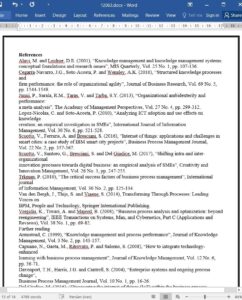The BPM has considerably developed over the recent years. The practices, systems and tools available have been scientifically investigated and, in most occasions, positioned in practice, thus making several of these BPM capabilities similar to commodities.
Most recent innovation models increasingly postulate an opportunity-rich IT-based atmosphere, and hastily emerging digital disruptions require novel BPM capabilities including the acquisition and incorporation of knowledge and technology from outside the organization (Alavi and Leidner, 2001; Trkman, 2010). Deeply rooted in an unceasing improvement crusade, BPM has proven its value for refining business processes (BPs), knowledge creation and innovation within present enterprises.
Drawing upon the idea that dynamic capabilities are process-driven competence of the firms and are rooted in both exploitative and explorative processes, BPM can be focusing on the evidence that business practice should simultaneously emphasize process efficiency as well as flexibility which is beneficial for organizations in unstable, ambiguous and casual environments. Then, actually, emerging studies on management innovation have hypothesized intriguing relationships between novel BPM competencies and organizational ambidexterity. Organizational ambidexterity, in fact, defines the co-existing business abilities of running the current processes as well as being able to acclimatize constantly the organization to a mutable environment. In a nutshell, an ambidextrous organization shows, at the same time, both exploitative and explorative strengths ( Junni et al., 2013)










